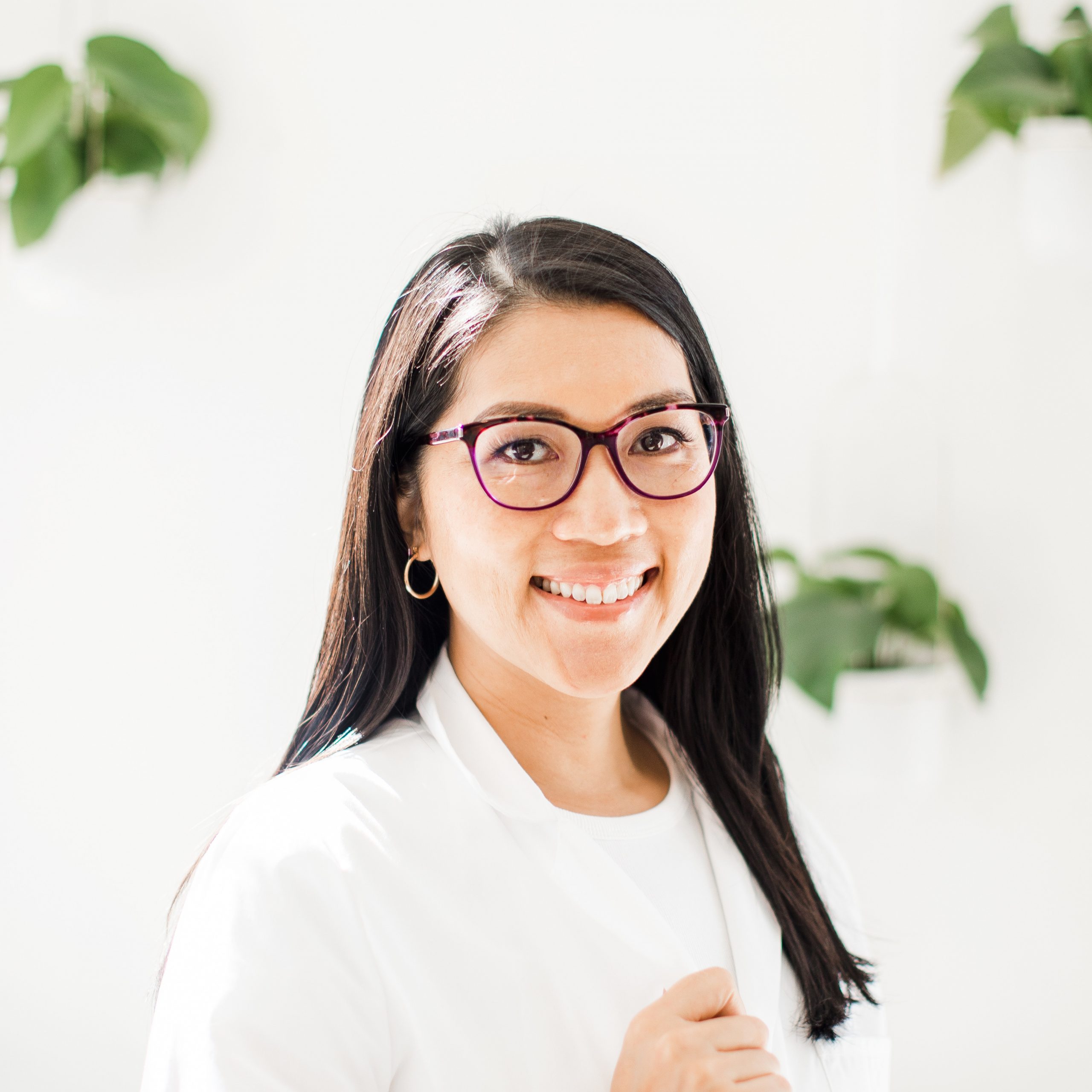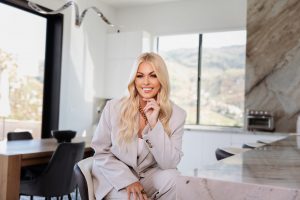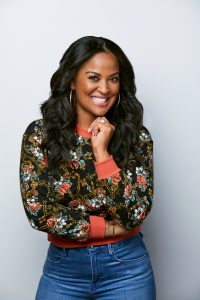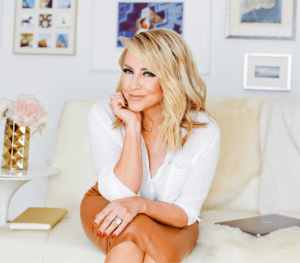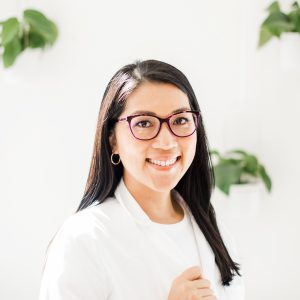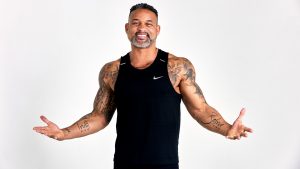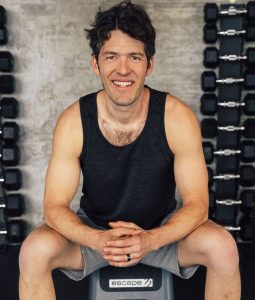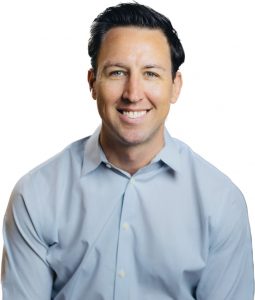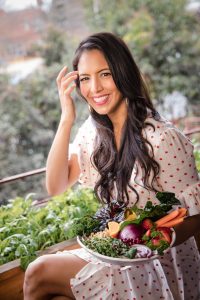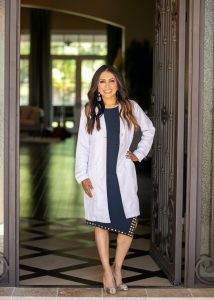SHAWN STEVENSON: Dr. Yvonne Burkart, welcome to the 2023 Family Health and Fitness Summit. You’re a toxicologist. So this is especially awesome to have you here because I want to look at this through the lens of a toxicologist when we’re looking at family health. But first I want to ask you, why doesfamily health and wellness matter to you personally?
YVONNE BURKART: I grew up much living the conventional lifestyle and suffered the health consequences of it. And it wasn’t because of any other reason other than not knowing. My parents didn’t know any better. And so we just went with what was happening in the mainstream and unfortunately didn’t end up well. But thankfully I found a way to circumvent that and get around it, support my health. And so I’m happy to be here today to be able to share that with other parents so they can help their kids so their kids don’t suffer and really help them prevent disease and illness in their kids.
SHAWN STEVENSON: Awesome, awesome. Now, obviously we live in a complex world today. It’s very different from the environment that we evolved in. And your specialty is really identifying some of these kind of toxic elements and how they’re impacting our bodies. So what are some of the things that we need to be aware of as parents and creating a healthy culture in our own household? Let’s talk a little bit about just even what we’re breathing inside of our homes.
YVONNE BURKART: Yeah, the indoor air quality is one of the major factors that determines our health. Because what we breathe in can easily enter the bloodstream and can have systemic effects, so effects all over your body. And for a young person, a small child, a baby at that, that can have lifelong consequences. So we gotta be really careful with the types of products that we’re bringing into the home because these can affect the indoor air quality that we breathe.
SHAWN STEVENSON: Okay, products like what?
YVONNE BURKART: Like cleaning products. They release volatile compounds, chemicals are just being released continuously just by having the bottle in your house. But not only that, there’s other products that we’re using like laundry care, the fabrics, the types of furniture we bring into the house, those also can release certain types of chemicals that we don’t wanna be inhaling for long periods of time.
SHAWN STEVENSON: Now what about especially fragrant or smelly things? You know, we’re creatures, we like smells. So what about things like, you know, in the bathroom, my mom, my grandmother, and just pretty much every household when I was a kid, they would have like these little air fresheners in the bathroom. You know, some of them, they had like some kind of gel center thing. It was like some kind of like a TP type thing on top and you open it up or like then plugins came along. What about things like that?
YVONNE BURKART: Yeah, these types of chemicals, again, unfortunately, they’re made with a lot of synthetics that can release endocrine disruptors. So things that affect our hormones. And for a child that can be devastating. And once you inhale these in, they start getting into the air that attaches to house dust. And so it’s very complicated, but the point is once they’re in your house, they don’t really leave. So we want to minimize and avoid these types of inhalation toxicants as much as possible.
SHAWN STEVENSON: Yeah, I just don’t think we think about it very often. You know, I remember of course, like getting my first car, we put the little air freshener thing up, you know, on the rear view mirror, you know, little cherries, you know, dangling down.
YVONNE BURKART: Pine trees.
SHAWN STEVENSON: The little pine tree, but there’s no pine in that actually. Where are these smells coming from?
YVONNE BURKART: They’re entirely synthetic for the most part. They can be made from petroleum. And a lot of them are actually carcinogenic.
SHAWN STEVENSON: Yeah, you shared that with me. You worked in the fragrance industry. Let’s talk a little bit about that.
YVONNE BURKART: I did. So the fragrance industry is multi-billion dollar industry per year. And they are adding fragrances to pretty much any product that you can think of. There’s just fragrances everywhere. And the market share of fragrances has exploded in the last decade or so. There’s just overuse of fragrance. And I think our bodies are now paying the price. We’re now seeing the health effects afterwards.
SHAWN STEVENSON: So these fragrances, as you mentioned, they’re usually not coming from the thing. So the pine smell is not coming from a pine cone or cherry smell isn’t coming from cherries. So how are they able to make a cherry smell?
YVONNE BURKART: So they can basically capture some of the gases, the chemicals that are coming off of the actual source and recreate that in the lab synthetically, entirely from something else that, like you said, wasn’t even a pine cone, wasn’t even a cherry. They can make it completely synthetically. They come typically from petroleum. They’re very cheap to make. And those typically carry the most risk factors.
SHAWN STEVENSON: Yeah. So again, this is serious business because a lot of these things we’re just oblivious to. We grew up in the culture where it’s just like, you have all these different items for different smells. And it’s just like, what are we trying to hide anyways? Why do we need all these different smells? But with that being said, in the household, I just wanna kind of finalize this point. So we mentioned cleaning products. So just be a little bit more aware, which is, again, we don’t have to change everything out. This is what I love about your work as well. It’s just making incremental improvements, maybe swapping out a few things, but it’s the overall toxic load we need to be aware of. So cleaning products, these so-called air fresheners. What about, you know, ‘tis the season right now and this is coming out, this is around the holiday season. So like pumpkin spice is popping out there on the streets. And in particular, like things like candles that have like this holiday smells, like candy cane scented candles. What about that? What about that kind of stuff?
YVONNE BURKART: Yeah, these scented candles are also releasing all of these toxic chemicals when you burn them. And they’re made with these cheap paraffin petroleum waxes too, that are also releasing chemicals. And so once they’re in the air, you’re breathing them in, they’re not going anywhere. People around this time aren’t really opening their windows enough. Even more as the weather cools off, something really important to do is just get adequate ventilation. But you can find a much healthier, less toxic candle just by looking for very simple ingredients. What I found in my research was that beeswax was the safest option.
SHAWN STEVENSON: So now we’re getting into solutions. All right, so we’re really gonna start pointing our attention towards less toxic and even non-toxic versions of things. And you just mentioned upgrading or swapping out. Let’s go for a bees candle, I’m sorry. Sorry, bees candle. So you mentioned, for example, swapping out and upgrading to a beeswax version of a candle. What are some other upgrades? You also mentioned opening the window, right? Letting in some fresh air. So is that gonna make a significant difference?
YVONNE BURKART: Absolutely, you can refresh the air in your entire room, opening your windows for an hour. It will clear out all of the stale air, all of the old air that’s in there, the dust, pollen, whatever. You can really just make a huge difference in your health just by doing that. And I know people don’t wanna open their windows in the winter, but I have family in Germany where it gets really cold. And one of the things they do first thing in the morning during the winter is open the windows. Just leave the room, open the windows, and when you come back in, it’s like a completely different room. It feels amazing.
SHAWN STEVENSON: I’ve never thought about it before, but we literally call it fresh air. Fresh air versus the stale air. And it’s something very simple, but what about our concerns about outdoor air quality? Like obviously we’re not right by the highway right now, but just living in a city, is the air indoors more concerning than the air outdoors?
YVONNE BURKART: It can be. Yeah, it really depends on where you live. So you touched on something really important. If you live in a high traffic area, a very densely populated urban area, then the outside air pollution could actually be worse than your indoor air pollution. So it just depends on where you’re at. But for the most part, general population, you can check your air quality online. Just search air quality and put in your zip code or your city, and it’ll tell you if it’s good, which is green, then you should open your windows.
SHAWN STEVENSON: And so what about the outdoor air quality being potentially three to five times better than indoor air quality? Is that just in general?
YVONNE BURKART: Yeah, that’s a more general figure that came out from the EPA. And it’s just basically saying that indoor air can be much more polluted than outdoor air.
SHAWN STEVENSON: Yeah, especially again, if we box ourselves in and we didn’t evolve, even the concept of indoor, outdoor is very strange. You know what I mean? Because we’re a part of nature and we’re just like beavers, basically. We’re building this thing, like I’m suddenly cut off from outside, but we’re still a part of nature and we’re creating our little micro habitat. But once we cut ourselves off, I think really the big piece here is the fresh air portion and also access to other natural pieces of environment, you know, whether it’s sunlight and things like that, you know, trees and, you know. But just for us to start thinking about this differently is really important. So you mentioned, okay, just simply opening a window, upgrading some of the products that we’re using. Now, what about air filters?
YVONNE BURKART: Yeah, air filters, yeah, they can definitely be very helpful. Something else that you can do, like if air filters are not within your budget is you can make your own DIY. Get a box fan and a HEPA filter at the hardware store. You can make one for less than $40, especially if you live in a very densely populated urban area, you can’t open your windows or you’re cooking a lot. This is something you might wanna consider, but really avoiding creating the pollution inside, letting fresh air in, that’s really gonna make a big difference already in your health. But you can invest in a portable air purifier once that plug in, you can move it from room to room if you don’t have enough money for one for every room. You can also get a HEPA vacuum that can help you lift up the dirt and the part and dust and particles from your house too. And just doing something simple like dusting, mopping and sweeping regularly, taking out your trash, that’s gonna help with your air quality too.
SHAWN STEVENSON: Just don’t be nasty, all right? Now, even with this being said, the DIY practicality, I love that, I love this so much because it doesn’t have to be expensive and where there’s a will, there’s a hundred or there’s a thousand ways, there’s many ways to figure these things out. Now for you personally, what are some of the things that you’ve done to create a culture of health and connection in your family, in your household? Can you share three things specifically that you’ve done like intentionally to create a culture of health and connection?
YVONNE BURKART: Yes, it’s just being more conscious and aware of our daily activities and how that can impact our health, that’s number one. So something like teaching my kids to be conscious, like if you’re wanting to buy this toy, what is this toy made out of? What are the overall risks and benefits? Is this gonna harm your health in a way? If it is, maybe let’s not get it, something like that. So that’s number one. Number two would be just taking small incremental steps. Like you said, it doesn’t have to be dump everything, replace everything, freak out and run to the store because that can be extremely expensive too. So just small changes, one swap at a time. Can I make this even a tiny bit better than the previous one? And just really looking at what I’m doing through I guess toxicologist lens, is there more risk or is there more benefit? Really weighing that out and trying to go for the option that has the most benefit and the least risk as much as you can without, you don’t have to go crazy with it. Just is this gonna be better for me or is this gonna be worse for me? That’s very simple, just a little mindset.
SHAWN STEVENSON: Awesome. Now, what about cooking? Let’s talk a little bit about the kitchen culture that you have. Your daughters are four and six right now. And are they already, do they like to be in the kitchen with you or have they started doing anything in the kitchen yet?
YVONNE BURKART: Yeah, they actually love cooking. So anytime I start cooking, I say, hey, do you guys wanna help? And they’re right there, they pull up their step stools and they’re right next to me. So one kid will add the milk and the next one will add the salt. And so we just take turns and we have our little recipe book that we like to work through and I’ve gotten a couple kids’ cookbooks that they really like. And yeah, I try to involve them as much as possible and to have them infuse their intention and their purpose when we prepare meals. I think that translates too into the benefit that you feel when you eat it. It’s just, it hits differently when you made it yourself or when you help make it with your mom.
SHAWN STEVENSON: Awesome, that’s such a good insight. Having even cookbooks that are literally geared towards kids, right? So I would imagine like it has a certain kind of layout, you know, maybe a certain type of animation or whatever it is, something that’s more engaging to a kid’s mind, like, hey, I wanna play, I wanna do this thing. Now, my question is, being that they’ve been involved in cooking and being in the kitchen, does this suddenly negate a child being a picky eater? Have you had to experience one of your kids or both your kids being “Picky eaters” And what would you advise for people to help our kids to have more of kind of a diverse flavor palette?
YVONNE BURKART: Yes, we’ve had picky eaters, one more picky than the other. And what we did was actually just always have whatever food they were averse to just on their plate. So they were used to seeing it on their plate. And it was really taking baby steps to encourage them to try something different. Just try it one time. You don’t even need to eat it. You could just lick it and just give it a taste. If you don’t like it, you can let it go. And just having that sort of non-pressure, like low pressure situation, I think it really helps them because then they feel that they can make the choice on their own if they like it or not. And it’s not, and just having it on the plate, so they’re used to just seeing it and just knowing this is how we eat, this is how we set up our plate.
SHAWN STEVENSON: Yeah. And I would imagine seeing you eat it and having it on your plate as well. What about the modeling? So do you guys eat together on a consistent basis?
YVONNE BURKART: Every night. Every morning we have breakfast together. Lunch is when we’re not together. But at night we always have dinner together.
SHAWN STEVENSON: Awesome. Awesome. Now I wanna ask you about, well actually I should ask you this before I ask you this question. Okay. Yeah, I’m gonna ask you this first. Now I wanna ask you about the actual dinner table culture. All right. So being that this is something that is a consistent part of your life. Are there any routines or rituals that your family has that you’ve kind of intentionally created that you could share with us?
YVONNE BURKART: So we have a custom that came from my husband’s German family. And it’s a little song that we sing together. So everyone holds hands around the table and we sing songs and it’s basically just expressing thanks and gratitude for the food that we have. And it’s just something really fun that the kids love doing too. That’s one of the customs that we do all the time. It’s peep, peep, peep.
SHAWN STEVENSON: That’s so awesome. But also even especially when our kids are young, it’s like creating that neural association towards like fun or something that I like to do and I get to like celebrate kind of party with my family. And this is something I wanna reiterate as well. No matter where our kids are on the age spectrum, there’s always opportunity to be more intentional in creating a healthier culture, no matter where. And I’ve seen this firsthand and having like my kids being in different generations and me transforming my health and starting to affect change in my family culture. And especially when kids are young, like being able to lay down some of these templates. We’re dealing with, here’s the thing. We’re dealing with different challenges at different ages. All right, so the picky eater thing might be an earlier thing, but then later on it might be like a cultural thing and like peer group thing, right?
SHAWN STEVENSON: So it’s just like being aware that parenting never really ends. Spoiler alert, all right? And also there’s different challenges at different levels and also different rewards and revelations and beauty at different levels. All right, I don’t wanna let you go without asking you about school lunches, all right? So when I was a kid, I had my lunchbox and my grandma would put together like, the bologna was the typical go-to, you know? Then I remember when the bologna with the cheese in the bologna, like little squares of cheese throughout, speckled throughout, looked like a bologna and cheese mutation of a pepperoni, basically. And I remember when Capri Suns hit the scene. That was amazing. The lunch rooms were going crazy with Capri Suns. What are you doing for school lunches? Knowing that that’s kind of the American standard. So what are some of the things that you’re doing for your family, for your kids, for school lunch?
YVONNE BURKART: We pack lunch every single day for our kids, except for the occasional, if there’s like a pizza party at school, then the kids will have pizza with their friends. But we pack a little bento box every day. So with a few tomatoes, blueberries, maybe a small sandwich of sorts, or sometimes I’ll make onigiri rice balls for my kids. So we like to make that together and let our kids pick what they want. But we always have fresh whole foods and we try to keep it as organic as possible, but it’s not always possible. We just do our best to eat minimally processed. That’s really the key, is trying to eat the fresh whole foods.
SHAWN STEVENSON: I love that. That’s great advice. Because again, this is, our kids are also interacting with their peers and it might be something totally different. I love the fact, as you mentioned, if there’s a pizza party, they get to do that. But also most of the time we’re doing, making sure that we’re integrating real whole foods into their meals. And that’s very similar to what we do with my family, with my son, with my youngest son, who’s still in school. And like Fridays, he gets to eat lunch at school and he could pick whatever he wants. Because there was a time where I’d be much more neurotic. It’s just like, you know. But also understanding, again, being able to integrate things, making sure that we have a nice chunk of real whole foods in that meal for him. But then maybe there is a sandwich or maybe there’s some organic chicken tenders or whatever the case might be. This is not about, and I love the fact that you are introducing something that is more from your own culture as well, right? With the rice balls, you know?
SHAWN STEVENSON: And so this makes me think back to my wife when she was in school. And this is just from the stories that she would tell me. And her mom would basically pack her Kenyan food and just like, it was so strange. But her mom was coming straight from Kenya. So it’s like her lunchtime was not like any of the other kids. So having a happy medium of adding in some of these kinds of cultural things, also deliciousness helps. When the kids like the foods, that really helps to keep that as a consistent part of their routine. All right, before I let you go, last question, and this is specifically for you. No one else in this summit is getting this question. You are, your background is incredibly diverse in which you’ve, you know, as far as your education and also your education for other people and being a toxicologist. What about what we’re packing our food in? What about what we’re putting our kids’ food in, even when they’re younger, bottles for our infants? What should we be aware of in food packaging, in food reheating? Let’s talk a little bit about that.
YVONNE BURKART: The number one thing to be aware of is plastic. So the amount of plastic that our food comes in contact with, how we’re treating those plastic containers. Are we heating our foods in it? That’s something we want to avoid. So things that I would recommend avoiding are try to avoid putting your food in plastic, period, as much as you can. If that’s not possible, like I understand, we will give our kids string cheese and it’s wrapped in a piece of plastic. It is what it is. Can’t really avoid that. But when it comes to putting your food that you’ve made at home, that you spent so much time and energy creating, let’s keep it as healthy as possible and try to avoid the plastic. You can use something like glass or stainless steel. It depends on the age of your child. So we’ve got younger kids, we use stainless steel lunch-boxes that have little dividers in them. They’re really awesome. You can find a whole bunch of them on Amazon. And you don’t have to worry about them breaking. Because the thing is that these plastics are releasing chemicals into our foods and our kids are eating them and they’re becoming affected by it. Their hormones are getting messed up from it. And so we really want to avoid that as much as possible.
SHAWN STEVENSON: So again, coming from a toxicologist, these things are in fact impacting our hormones, in particular for our kids. So can you talk a little bit more about that? So what are some of the concerns with things like plastics and heating our food in plastic?
YVONNE BURKART: When we heat our food in plastic or when our food just touches the plastic, depending on how long it’s there or whatever, but the heat will actually cause it to break down and release microplastics, as well as plasticizer chemicals, which are messing up our hormones. And so we don’t want to be eating this stuff because our body doesn’t know how to deal with it. These are completely foreign chemicals and particles that weren’t there. They’re not supposed to be in our food, basically. And so some of these can have pretty widespread health effects. Neurological situations can happen. There’s actually been some data on autism, ADHD, as well as, of course, the reproductive stuff. So premature puberty in kids, behavioral issues. So the list goes on and on. So if you can avoid that, you’ll be doing your kid a huge favor.
SHAWN STEVENSON: One of the things that you shared with me recently, because there’s a lot of products that now say BPA-free, and these are the plasticizers that are endocrine disruptors, right? So these are basically xenoestrogens that can attach to our estrogen receptors and change programs in our bodies, essentially. But is BPA-free good enough?
YVONNE BURKART: It’s not, because BPA is only one type of plasticizer chemical. There’s hundreds. Just within the bisphenol family, there’s several members, just BPA, BPF, BPS. There’s so many. So it doesn’t make sense to just avoid the one. And the easiest way to avoid them all is to avoid plastic.
SHAWN STEVENSON: Yeah, and again, I love that you set it up, saying to the best of your ability, it doesn’t have to be 100%, but if we can choose stainless steel lunch boxes and lunch containers, let’s do that. And there are small, simple upgrades that we can make, and it’s just becoming more aware of these things. So I thank you so much for your input and your expertise and really helping us to get educated on this stuff. This is really awesome. I appreciate it.
YVONNE BURKART: Thanks for having me.
SHAWN STEVENSON: Of course, Dr. Yvonne Burkart, everybody.
